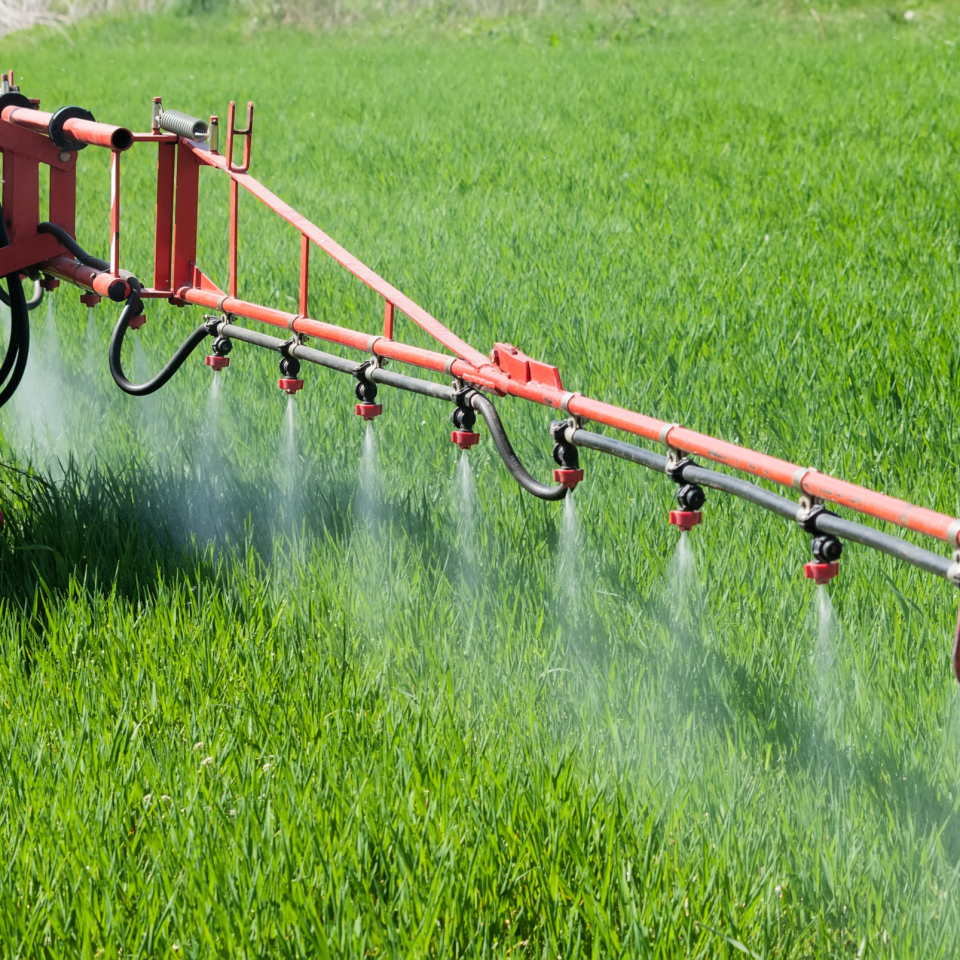
Your sprayer might look clean—but is it really?
Every growing season, unexpected crop injury, clogged nozzles, and tank-mix compatibility issues can be traced back to one common culprit: tank contamination. Often invisible to the eye, chemical residues from previous applications linger inside sprayer tanks, booms, hoses, filters, and inductors—long after you think the job is done.
The most persistent offenders? Group 4 herbicides like 2,4-D, dicamba, and MCPA; micronutrient formulations, particularly boron; and oil-based adjuvants. These products are sticky, slow to break down, and quick to cause trouble when sprayed on a sensitive crop or mixed with incompatible partners. Unfortunately, a basic rinse with water usually isn’t enough to remove them.
And it doesn’t take much. Just a few millilitres of residue left behind can be enough to cause visible crop damage—especially when switching from corn to soybeans, or from herbicides to foliar products during vulnerable crop stages.
Where Most Cleanouts Fall Short
The biggest risk with sprayer contamination isn’t that cleanouts are skipped—it’s that they’re incomplete.
Here’s where residue tends to hide, and why it matters:
- Hoses and booms: These are often the last areas to be fully flushed. Residue can settle in dead-end lines, pipe bends, and check valves—especially if water isn’t circulated properly during cleaning.
- Screens and strainers: Micronutrients and dry formulations (like ammonium sulfate) can cake inside fine mesh filters. These clumps may break loose later and contaminate a new load.
- Tank walls: Certain chemistries—particularly oil-based products—can cling to tank surfaces and dissolve during agitation, introducing contamination partway through a subsequent spray job.
- Inductors and premix systems: If overlooked, these components can hold concentrated residues that re-enter the system as soon as you start filling the next tank.
The Hidden Risk of Group 4 Herbicides
Among the most damaging contaminants are Group 4 herbicides, also known as synthetic auxins. These include 2,4-D, dicamba, MCPA, and newer actives like halauxifen-methyl. These products are highly active at low rates, and even trace residues can severely injure sensitive crops.
If a sprayer previously used for dicamba isn’t thoroughly cleaned before a soybean application, for example, it can result in cupped leaves, stunted growth, or yield loss—without applying a single new drop of dicamba.
Why Cleanouts Matter for These Herbicides
| Product | Issue |
| 2,4-D, Dicamba, MCPA | Systemic auxins that can damage sensitive crops (e.g., soybeans) in even trace amounts. Residue can cause visible symptoms like cupping or distortion. |
| Clopyralid | Highly persistent; clings to tank interiors and may carry over into compost, damaging non-target crops like tomatoes and lettuce. |
| Halauxifen-methyl | Commonly used in complex tank mixes—residue can interfere with subsequent applications or violate label safety windows. |
| Primisulfuron | Though not a Group 4, this SU herbicide can leave sticky residues. Improper agitation or cleaner use can cause nozzle clogs or crop response. |
Debunking Common Cleanout Myths
Myth #1: “Water is all you need.”
Reality: Water may remove loose residue but isn’t effective against oily, sticky, or chemically bound residues. A proper tank cleaner is often required to fully break them down.
Myth #2: “If it looks clean, it is clean.”
Reality: Residue isn’t always visible. Even when the tank appears spotless, active ingredients can remain on internal surfaces and be reintroduced into future mixes.
Myth #3: “I only need to clean when switching crops.”
Reality: Crop changes are high-risk, but so are complex mixes. Even back-to-back herbicide applications can create antagonism or unintended injury if residues are present.
Myth #4: “Triple-rinsing is a waste of time.”
Reality: Triple-rinsing is often the minimum needed to reduce residue to safe levels. Incomplete rinses are one of the leading causes of tank contamination and crop injury.
Best Practices for Thorough Sprayer Cleanouts
- Use the right cleaner. Choose a tank cleaner suited to the product class just applied. Group 4 herbicides, boron foliar sprays, and adjuvants may require specific cleaners.
- Flush the entire system. Rinse the tank, booms, filters, nozzles, hoses, and pump. Don’t forget side tanks, inductors, and rinse stations.
- Agitate thoroughly. Run the rinse solution with agitation to dislodge residues from tank walls and internal plumbing.
- Triple-rinse every time. Rinse, agitate, and drain—three times. Add tank cleaner to at least one rinse cycle to maximize effectiveness.
- Follow the label. Many products include cleanout instructions tailored to their formulation. Don’t skip these—they’re there for a reason.
Why It Matters Now
As sprayer schedules get tighter, crop rotations become more diverse, and tank mixes grow more complex, there’s less room for error. Thorough sprayer cleanouts help prevent costly field damage, protect your investment in crop inputs, and reduce the risk of unintentional carryover to the next crop.
If you’re unsure whether your current cleanout process is effective—or need advice on the right tank cleaner for your chemistry—reach out to your local Sylvite Agri-Services. We’re here to help you safeguard your equipment, your crop, and your bottom line.